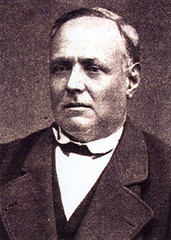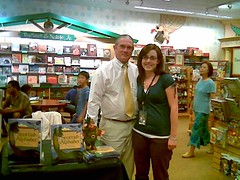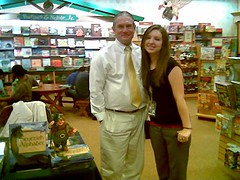While at my booksigning last weekend at the Barnes and Noble in Frisco, Texas, I heard the music of Great Big Sea playing in the background. The CD is Fortune’s Favor. Band member Sean McCann says, “Our music is of Newfoundland . . . It would be impossible to do what we do if we were from anywhere else. Our songs come from the sea and the cliffs and the rocks and all the other natural beauties our country provides. Without her we simply couldn’t exist.”
I decided that some of the music could be used in my Scots-Irish show, so I purchased the CD. It is the band’s ninth studio recording. I was not disappointed.
For more information about them, go to the group’s website:
Here are the lyrics of three of the songs from the CD that I intend to incorporate into my show.
ENGLAND by Great Big Sea
We shipped on board the Maryanne
To find a better life
And we walked across the water
When she broke up on the ice
We came ashore in Carbonear
With nothing but our rights
And I wondered if I e’er again
Would see my London lights
We were far from the shores of England
Far from our children and wives
To play our hand in the Newfoundland
Where the wind cuts like a knife
We were far from the shores of England
Far from our native soil
To chase a wish and hunt the Fish
And on the rocks to toil
We were far from the shores of England
We spend our days amid the waves
Working water, hook and twine
We would go for weeks with blistered cheeks
Waiting for the sun to shine
But as long as the sky hold over us
We will not taste the brine
And we’ll curse the cod
With the fear of God
As we haul in every line
Should we find Fortune’s Favour
And be spared from the gale
We will live off honest labour
With our hearts as big as sails
But if I should die don’t bury me
Or leave me to the sea
Please send my bones back to my home
Where my spirit can be free
BANKS OF NEWFOUNDLAND
You bully boys of Liverpool
I’ll have you all beware
When you sail on them packet ships,
No dungaree jumpers wear
But have a big monkey jacket
All ready to your hand
For there blows some cold nor’westers
Off the banks of Newfoundland
Chorus:
We’ll scrape her and we’ll scrub her
With holy stone and sand
For there blows some cold nor’westers
On the banks of Newfoundland
Now the mate he stood on the fo’c’sle head
And loudly he did roar
Come rattle her in me lucky lads,
You’re bound for America’s shore
Come wipe the blood off that dead man’s face *)
And haul or you’ll be damned
For there blow some cold nor’westers
On the banks of Newfoundland
CHORUS:
So now we’re off the hook me boys,
And the land is white with snow
And soon we’ll see the pay table
And we’ll spend the whole night below
And on the docks, come down in flocks,
Those pretty girls will say
Ah, It’s snugger with me than on the sea,
On the banks of Newfoundland
CHORUS:
THE ROCKS OF MERASHEEN
The fondest wish that ever I had
Since the day that I was weaned
Is to go back and walk again
On the rocks of Merasheen
I still recall that sad farewell
I gave her on that day
When all upon a whaling ship
I went to earn my pay
On the hard rocks, the rocky rocks,
The rocks of Merasheen
From out of Rose, a Rue we sailed,
To hunt the big fish down
We sailed upon the ocean till
We sailed the world around
With girls in every port of call
I did go oft astray
Forsaking her I left behind
Back in Placentia Bay
By the hard rocks, the rocky rocks
The rocks of Merasheen
Now in my old and aching age
I think of her once more
Of how she fared while waiting
For my knock upon her door.
What fate was hers I do not know
But in my sleep I see
Her walking on the cliffs above the rocks of Merasheen
On the hard rocks, the rocky rocks,
The rocks of Merasheen
On the hard rocks, the dirty rocks
The rocks of Merasheen





